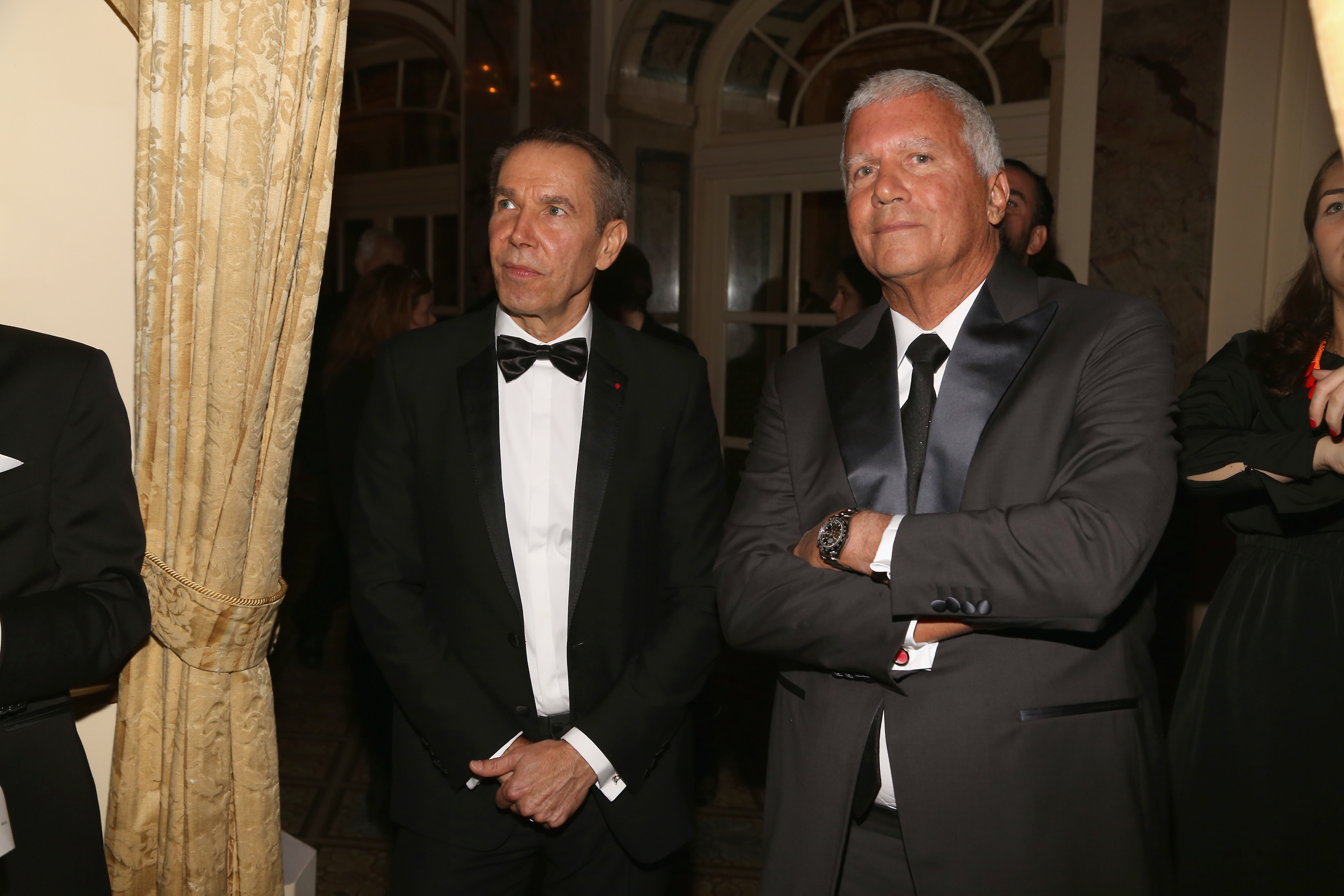
You can’t rush perfection. That’s the message Gagosian has been sending in court as it fights a two-front legal battle against disgruntled collectors who are furious that the gallery has not delivered on promised sculptures they bought by Jeff Koons.
On Monday, a New York state court judge allowed The Matrix producer Joel Silver’s lawsuit against Gagosian to proceed, albeit reluctantly. Gagosian had sought to dismiss the case, which stems from the delayed production of Koons’s Balloon Venus Hohlen Fels, a technically complex sculpture that Silver agreed to buy for $8 million in 2014.
The legal drama continued on Wednesday, when a different New York judge encouraged the Museum of Modern Art trustee and asset-management executive Steven Tananbaum to reach a settlement with Gagosian in a dispute over three similarly delayed sculptures.
Jeff Koons in front of his Ballon Venus (Magenta) (2008–12). Photo © David Fisher, 2019.
“That gallery is quite litigious,” Judge Saliann Scarpulla said to Gagosian’s legal team before arguments began on Wednesday.
“Always the defendant, your honor,” Gagosian’s lawyer replied.
Both cases, originally filed within two weeks of one another last April, allege that Gagosian misrepresented the status of the sculptures and that the artist has taken an unreasonable amount of time to produce them.
The gallery argues that the delivery dates were always listed as “approximate” and that, as highly sophisticated collectors, Silver and Tananbaum should have insisted on a firm date in their purchase contracts if they needed the works to be delivered by a certain time.
High-Stakes Purchases
Few would dispute that when it comes to making art, Koons is notoriously slow. One legendary work, Play-Doh, took him two decades to produce as the perfectionist artist fiddled with the medium and refined the production process. But according to these angry collectors, Koons isn’t just slow—he and his gallery are unreasonably slow.
The two cases are not identical, although they each offer a window into the complex world of high-stakes art purchases. Silver claims that when he attempted to cancel the sale of Koons’s Balloon Venus after he found out it would be delayed an additional two years, the gallery told him he would have to forfeit the $3.2 million he had already paid.
Gagosian, in turn, claims the Hollywood producer “repeatedly failed to make [further] agreed-upon payments” even after the gallery offered a modified schedule. Then, just days after Silver’s attorney said he would make the payments, Silver “reneged and sued the gallery,” according to Gagosian’s court papers.
Producer Joel Silver speaks during the 25th American Cinematheque Awards in Beverly Hills, California. Photo by Kevin Winter/Getty Images.
Although the judge allowed Silver’s suit to proceed, he suggested the collector was not on firm ground, stating that the gallery was “within a hair’s breath” of being able to get the case dismissed.
Tananbaum’s case, meanwhile, hinges on three different sculptures, including Koons’s Magenta Balloon Venus, which the executive purchased in September 2013 and expected to be delivered two years later. To date, Tananbaum has paid $13 million for the three works, roughly half the total, and has repeatedly been told the sculptures are forthcoming without any tangible sign that they are in fact underway, according to his legal team.
When his case was first filed, Tananbaum’s former attorney suggested the delays were indicative of a broader, darker scheme on the part of Gagosian and Koons. “When the curtain is pulled back, ‘Something is rotten in the state of Denmark’ cannot help but spring to mind from defendants’ naked, unadorned avarice and conspiratorial actions in connection with the sale of factory-manufactured industrial products called Jeff Koons sculptures,” the attorney wrote at the time.
What Is Art, Anyway?
The discussion at Wednesday’s hearing contained no Shakespearian utterances, but it did veer into philosophical territory at points. Because collectors are entitled to certain protections under under Article 15 of the New York Arts and Cultural Affairs Law if they buy works produced in multiples, part of the debate hinged on whether Koons’s sculptures—which are made in editions of three and five through a lengthy, technologically rigorous process—should be classified as multiples or fine art.
Steve Tananbaum. Image courtesy of LinkedIn.
The extended discussion of what qualifies as a unique work of art would have raised the eyebrow of any professor of 20th-century art history. “I’m not suggesting he does everything with his hands, but it’s not an automated process,” Gagosian’s lawyer said at one point. “It’s a mechanical process, but it’s not automated.”
Judge Scarpulla declined to come down one way or another on the multiples question. Instead, she encouraged the two sides to reach a settlement so they could resume business as usual. “Next year, Mr. Tananbaum will go buy more art from Mr. Gagosian,” she said. “I’m the only one getting agita.”
Lawyers for Gagosian, Silver, and Tananbaum did not provide additional comment by press time.